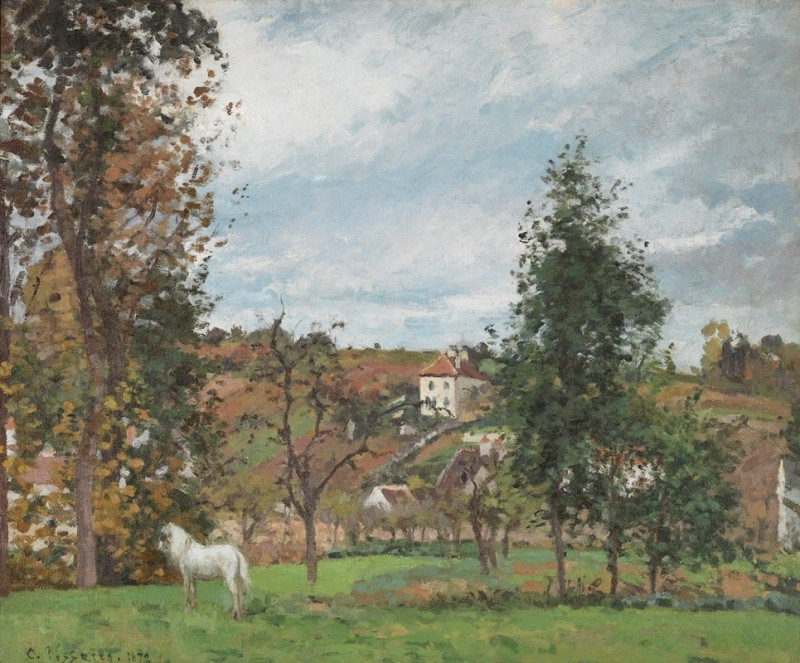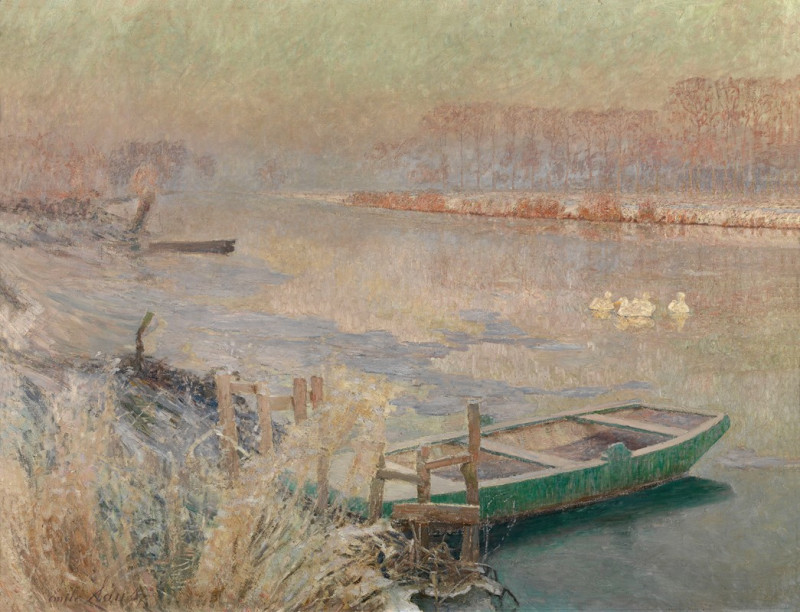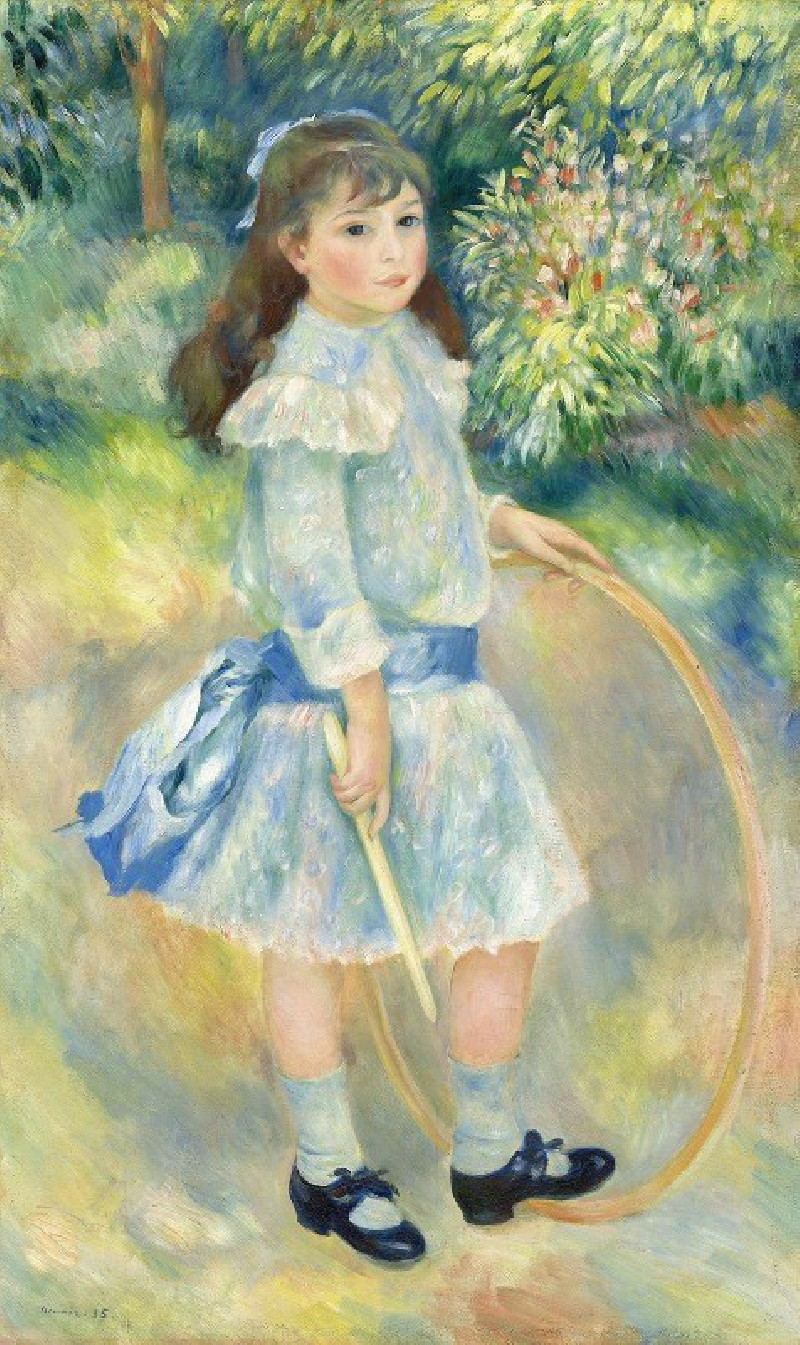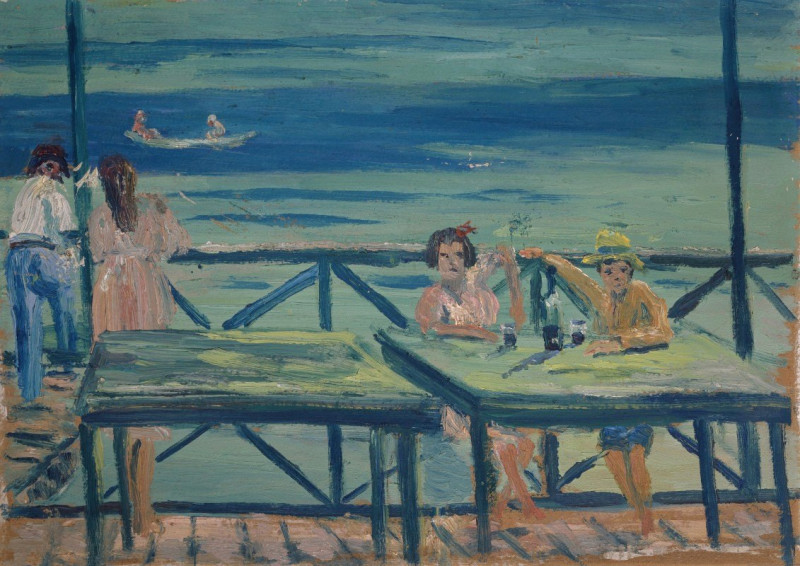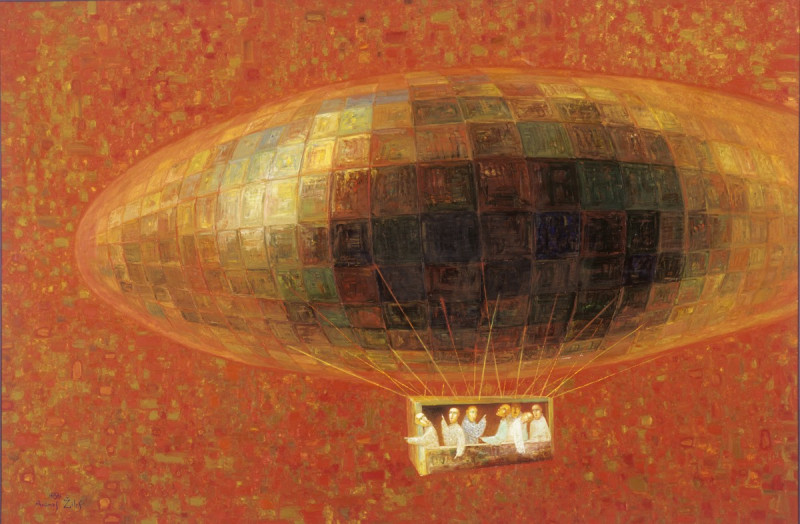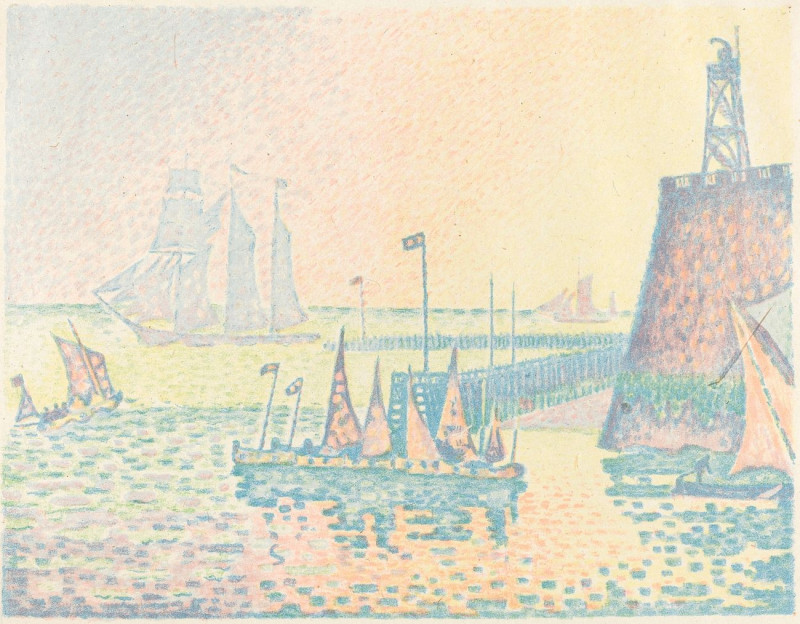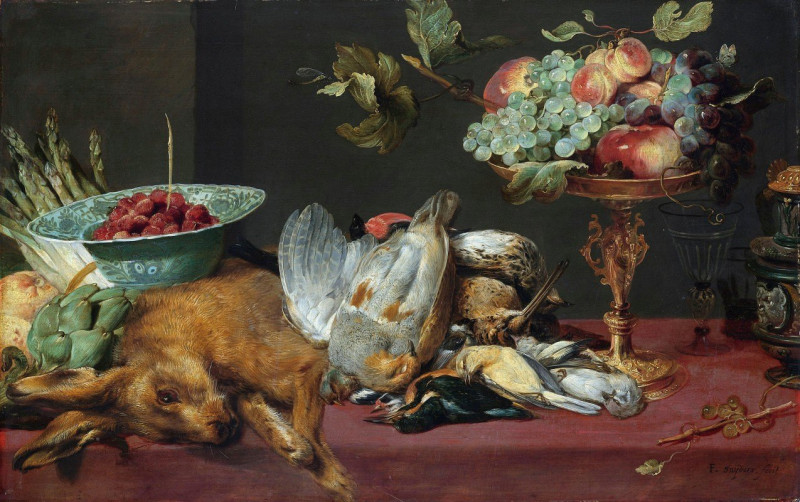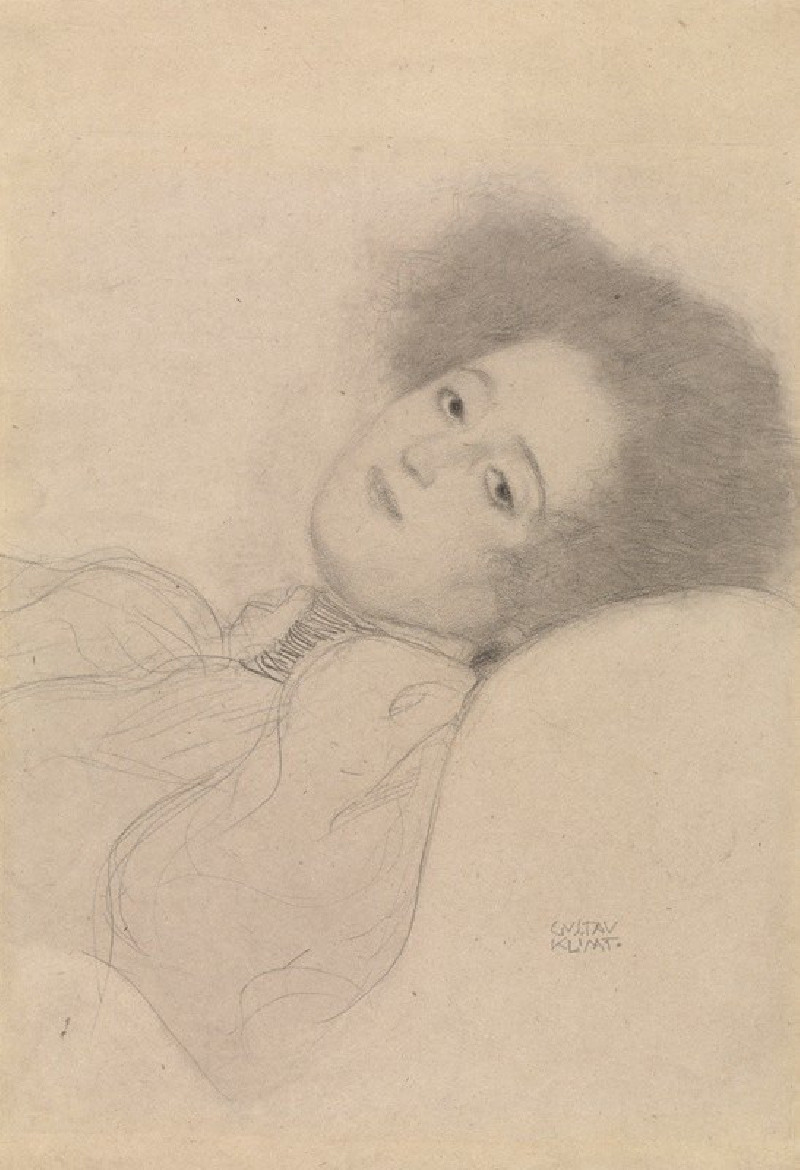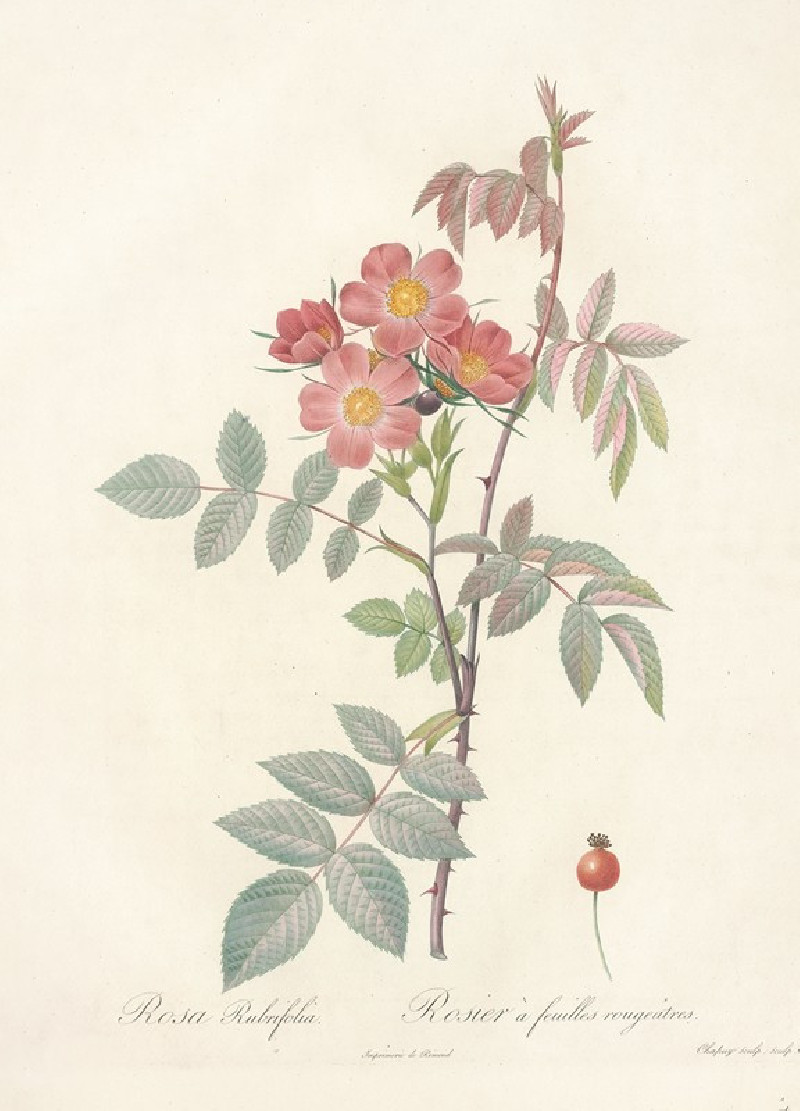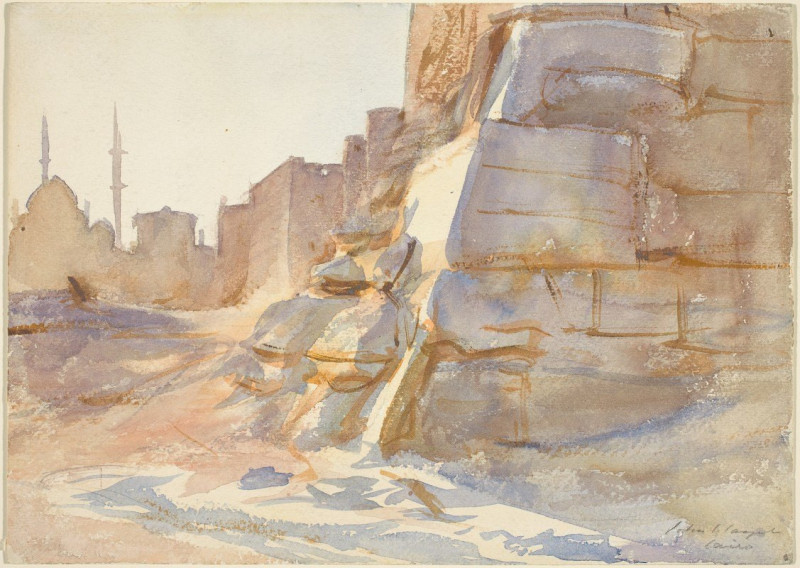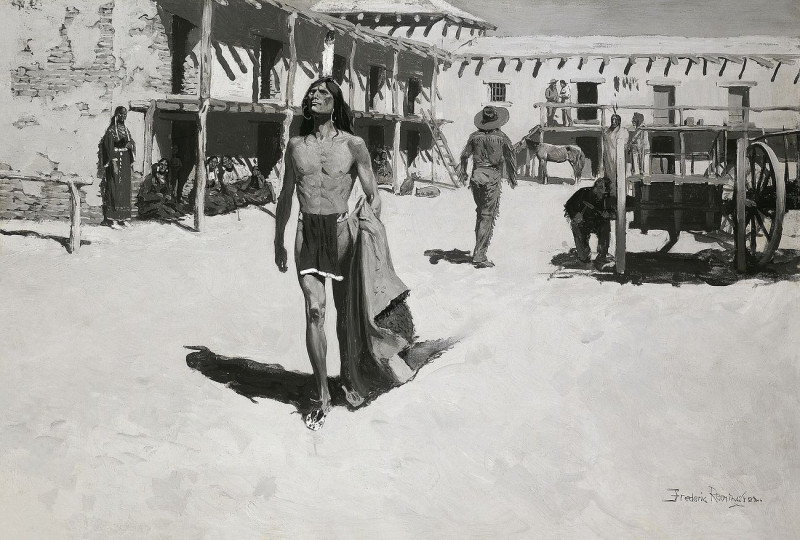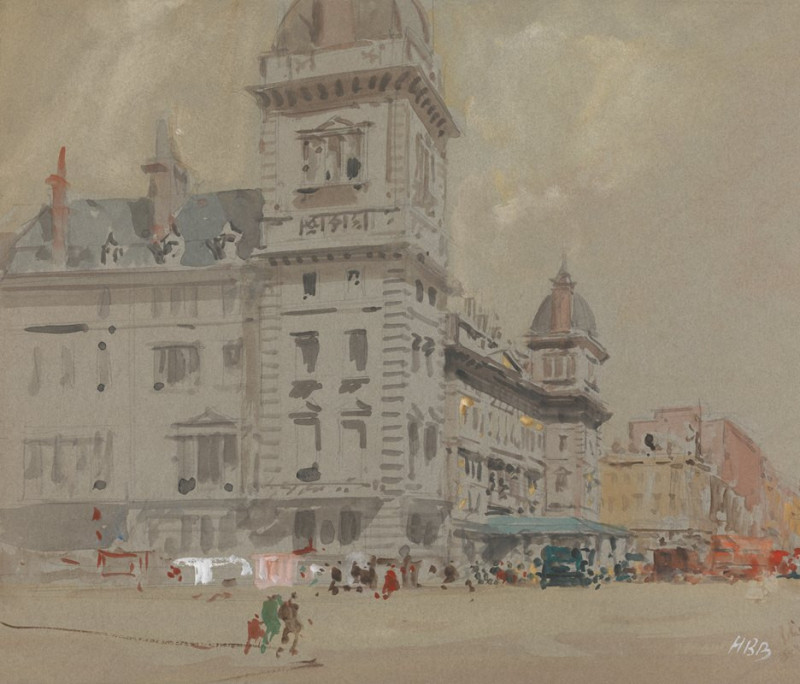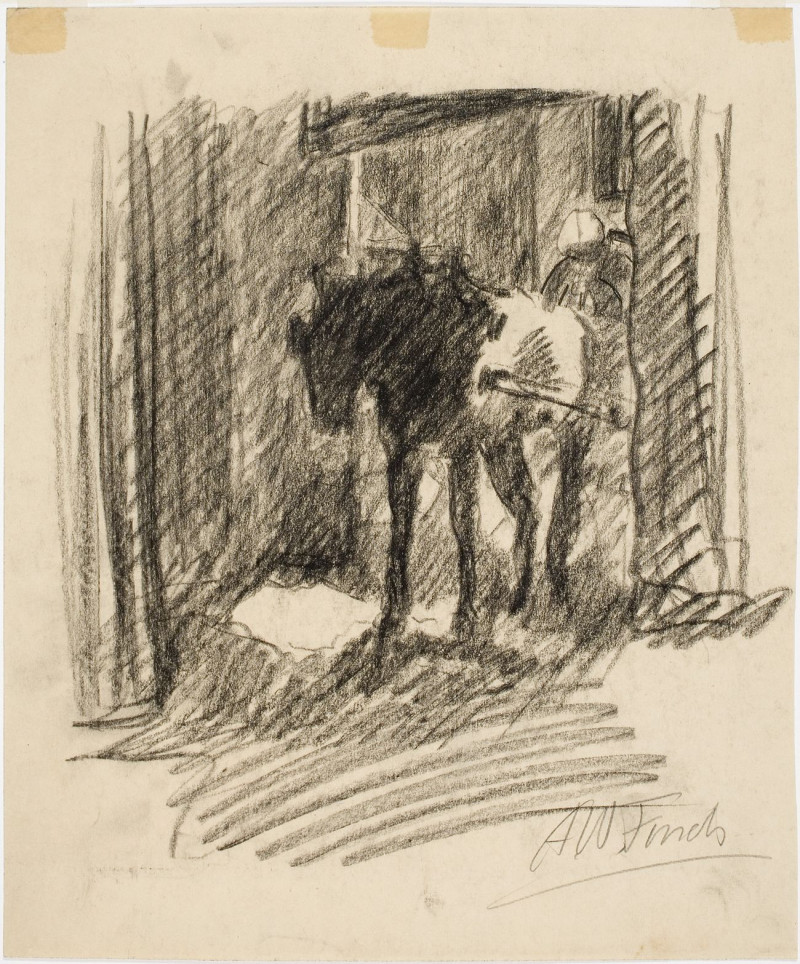Paysage Avec Cheval Blanc Dans Un Pré, L’hermitage, Pontoise (1872)
Technique: Giclée quality print
Recommended by our customers
More about this artwork
** Unveiling the serene beauty of the French countryside, this evocative painting titled "Paysage Avec Cheval Blanc Dans Un Pré, L’Hermitage, Pontoise" by Camille Pissarro captures the essence of natural tranquility. Painted in 1872, this artwork is a testament to Pissarro's deep connection with rural landscapes and his profound mastery within the Impressionist movement.The painting presents a pastoral scene set in the village of L'Hermitage at Pontoise. Dominating the foreground is a solitary white horse, grazing quietly amongst the vibrant greens of the lush grass. The horse, positioned slightly off-center, provides a focal point that draws the viewer into the peaceful everyday life of the countryside.Surrounding the horse are scattered trees of varying densities, creating a dynamic contrast between light and shadow that dances across the canvas. To the viewer’s right, a tall, dense tree rises, anchoring the scene with its robust presence amid softer forms. The middle distance reveals gently sloping hills dotted with hints of red and orange foliage, suggesting the onset of autumn.In the background, the eye is led to a quaint village, characterized by small houses with traditional architecture, their white walls gleaming against a backdrop of treetops and overcast skies. This subtle human presence signifies the harmonious interaction between nature and civilization in rural settings.
Delivery
Returns
Blessed are they who see beautiful things in humble places where other people see nothing. — Camille Pissarro
Camille Pissarro (1830-1903) was born on St.Thomas (now the US Virgin Islands) to a Portuguese father and a Dominican mother. He went to Paris to study art at Ecole des Beaux-Arts. He was an early pioneer of pointillism and neo-impressionism and later became a mentor of many famous impressionist painters including Cezanne, Manet, Renoir, and Gauguin. His paintings depicted rural and urban French landscapes and lifestyle. Many of his works politically captured images of peasants and laborers. Today, he is considered the father of impressionism.

